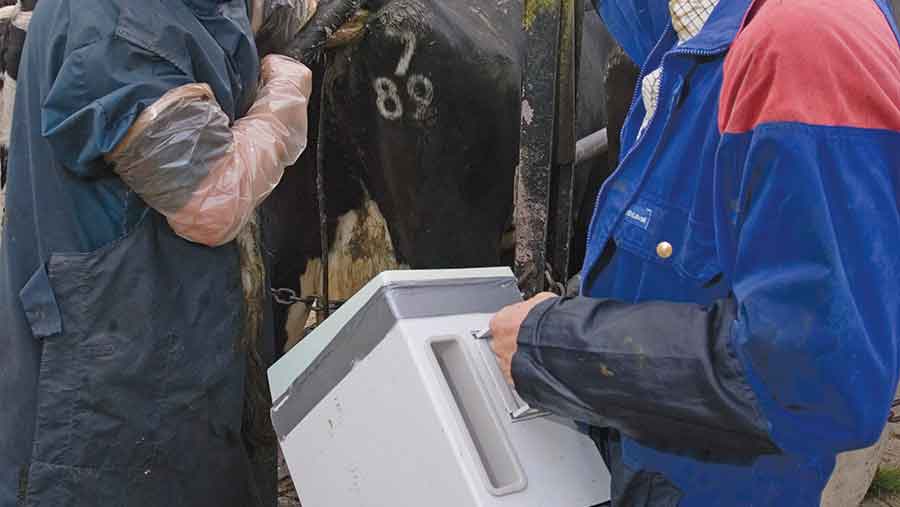Why pregnancy scanning is key to raising suckler herd profitability
A cow that doesn’t deliver a calf once a year is a financial burden in a suckler beef system so pregnancy scanning is increasingly being used on beef farms to remove uncertainty at calving time.
Stevie Rolfe, who scans thousands of cattle every year, says while the cost of keeping a suckler cow is often seen as a reason for lack of profitability in the sector, it is the cost of keeping an unproductive cow that can inflict real financial damage on a business.

© Jonathan Page
See also: New Zealand study pinpoints common causes of early embryo loss
One of the principal reasons why some beef farmers are still leaving it to chance is cost but at around £3 a cow, Mr Rolfe says the return on investment can be significant.
“I have scanned herds and found not a single animal to be in calf. It is not uncommon and is mostly due to the bull not working.”
Fifty per cent of the 50,000 animals he scans annually are beef cattle and that figure is growing. Ultrasound scanning is seen as more accurate than manual palpating and can be carried out earlier.
Mr Rolfe scans cows and heifers five weeks after the bull has been taken out. Where there is a known history of abortion or pregnancy loss, cows can be rescanned for re-absorption but, due to economics, this is not often a viable consideration.
Mr Rolfe, who is based in Lanark, says scanning can give a good early indication of disease status. “Cows losing pregnancies is a telltale sign that there may be BVD, leptospirosis or another disease in the herd. Cows that scan empty are an early warning sign.’’
The are many benefits of scanning, he says, with the most obvious being confirming whether or not a cow is pregnant while there is still time in some herds to give her a second chance.
Case study: John and Cathy Anderson, Scottish Borders
At Hardens Farm, near Duns in the Scottish Borders, John and Cathy Anderson calve their 110 Aberdeen Angus-cross and Simmental-cross cows in a spring and autumn block.
If a cow in either group scans empty, she is marked and is immediately returned to the bull. “We give cows a second opportunity because we can swap them between the two groups,’’ Mr Anderson explains.
Mr Anderson started scanning the herd six years ago because leaving it to chance was impacting on profitability.
“We used to turn the bull in for 10 weeks and keep our fingers crossed hoping the cows would be in calf. Sometimes they weren’t but by the time we realised it would be too late.’’
Mr Anderson says scanning also helps confirm at an early stage in mating if a bull is working. “If a bull has been with the cows for long enough and we are not 100% certain he is working, we will scan the cows at an early stage. It gives you a chance to sort yourself out with another bull.’’
Because scanning can also establish the stage of gestation, Mr Anderson says it flags up when cows are likely to calf. “It is pretty accurate, so it gives us a fair idea of which cows to watch.’’
It also identifies at an early stage which cows might need to be culled. “The scan might show that there is a problem with a cow and that there is no point in putting her back to the bull,’’ says Mr Anderson.
Accurate due dates mean that early and late calving groups can be managed differently in terms of nutrition and mineral supplementation to achieve target body condition at calving.
Arwel Owen, Genus ABS beef manager, says cows calving late in the season can be given special attention.
“These cows will be high risk for the next production cycle but with an accurate inventory they can be given special attention to ensure their offspring have the best chance of the survival and productive growth as well as the cow having a better chance of becoming pregnant next season,’’ he says.
Although scanning is an additional cost, at Harbens Farm it is seen as a sound investment. “It gives us more control over what we are doing, it tells us whether a beast is going to be productive or not,’’ says Mr Anderson.
